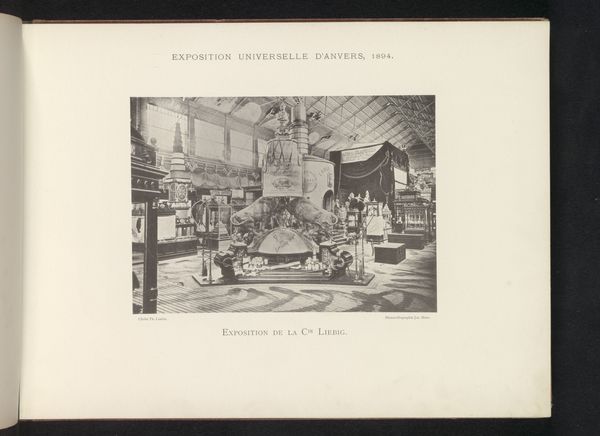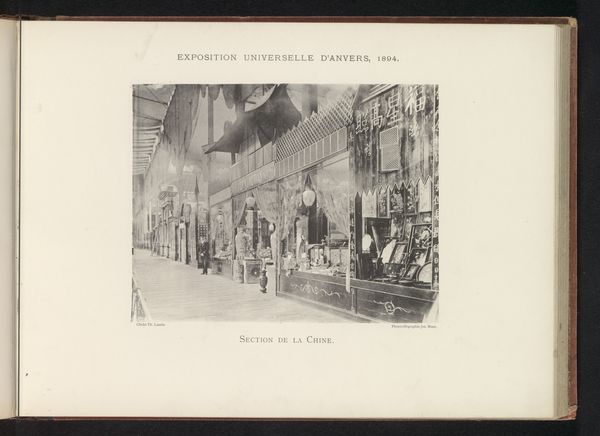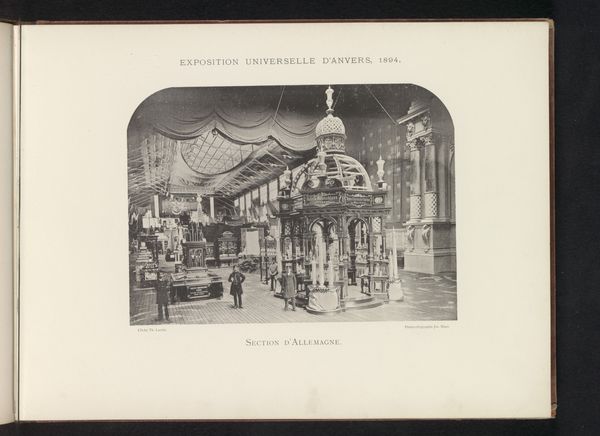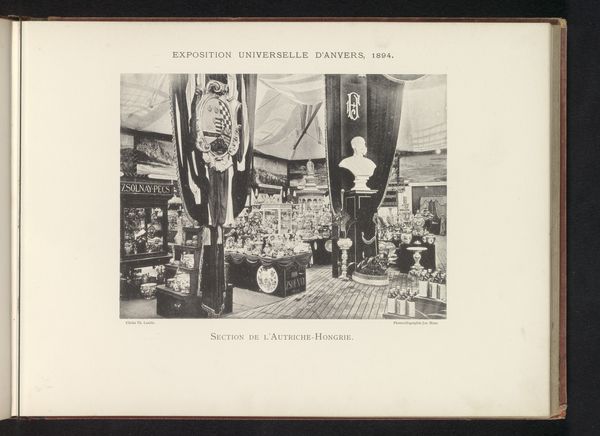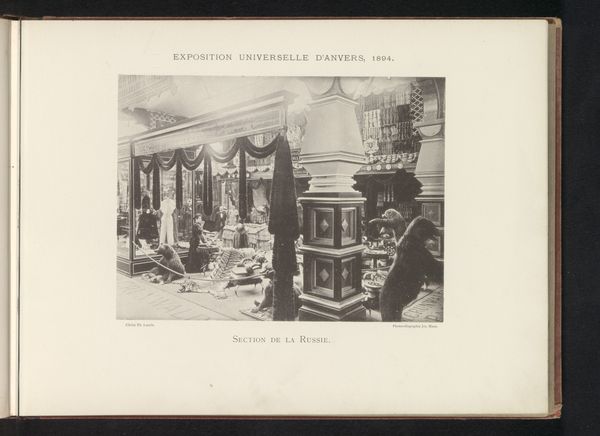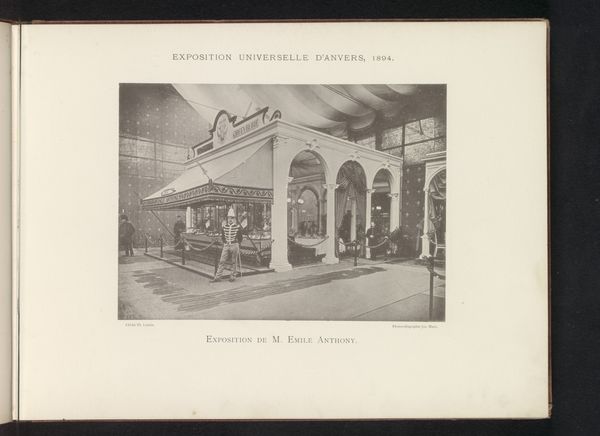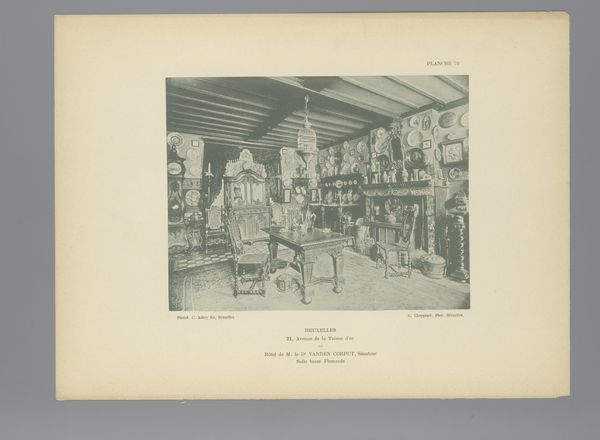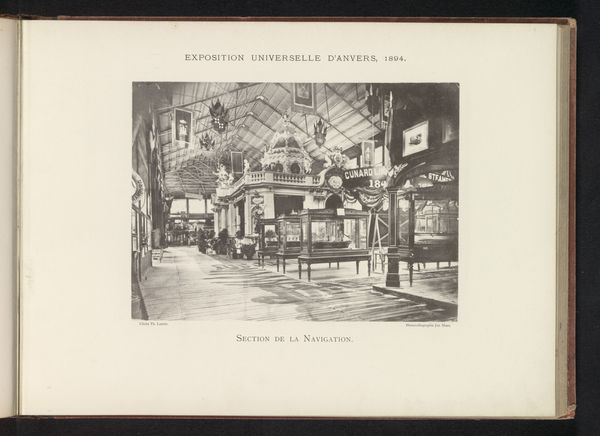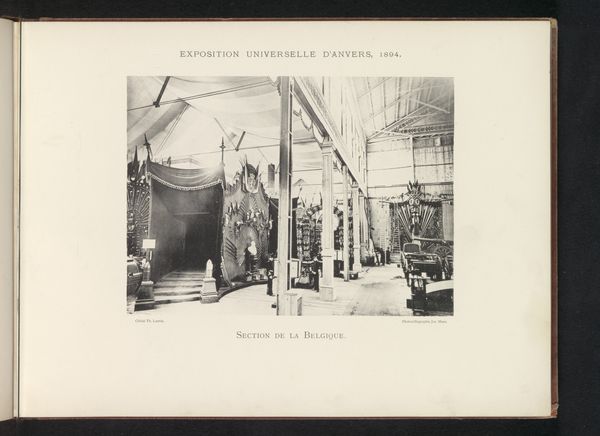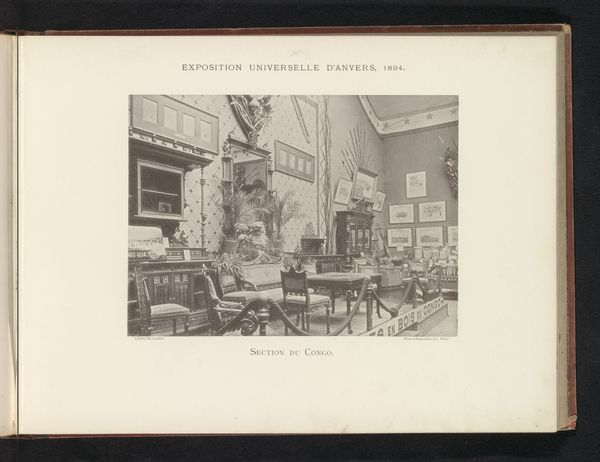
Expositie van Ottomaanse objecten tijdens de wereldtentoonstelling te Antwerpen 1894
0:00
0:00
print, photography, gelatin-silver-print
# print
#
photography
#
orientalism
#
gelatin-silver-print
#
cityscape
#
islamic-art
#
history-painting
Dimensions: height 160 mm, width 218 mm
Copyright: Rijks Museum: Open Domain
Curator: This photograph, entitled "Exposition of Ottoman Objects at the World's Fair in Antwerp," captured in 1894, shows a constructed Ottoman section, crafted during a moment of intense fascination and also deep historical and cultural tension. It comes to us as a gelatin silver print, originally created by Th. Lantin. Editor: My first thought is how sterile the whole display appears, especially given what I understand about the richness and vibrance of Ottoman artistic traditions. It looks so clinical. Curator: It’s a fascinating representation, isn’t it? World's Fairs at the time frequently constructed these kinds of displays as a means of familiarizing people with foreign cultures—of visually mapping an expansive and fast-changing globe. The visual language used speaks volumes; even though it's documenting an exhibition of objects, the perspective chosen by Lantin positions the space in ways that emphasize the Western gaze, the almost scientific categorization and consumption of another culture. Editor: Absolutely, that notion of the "Western gaze" feels quite pointed. It is evident in how objects like textiles and clothing are staged more as ethnographic specimens, completely divorced from their intended cultural and social contexts. It makes you think about the era’s colonial power dynamics and how these displays reinforced skewed narratives. Curator: It's crucial to remember the visual frameworks people had in encountering other cultures during that time, and photography like this—however well-intentioned—really crystallized them. The composition of the piece is so deliberate, guiding your eye and influencing what aspects you focus on. Photography at the time became its own potent symbol in this process of shaping social, cultural, and sometimes even political meanings. Editor: Seeing those banners in French above the "Ottoman Section" so close to signage advertising Italy and other Western nations, for instance, makes clear where the organizational power truly rests. This presentation creates an unbalanced, performative dialogue between cultures, where the terms were always predetermined and controlled. The echoes of this historical tension are incredibly potent. Curator: I agree, thinking about how potent images like this become over time, layering new meaning and prompting ever new questions as ways of comprehending these formative eras is critical. It serves as both a historical record, but also a potent symbol of that era’s relationship with otherness. Editor: Exactly. It serves as a compelling case study in how visual representation both documents and, unfortunately, sometimes distorts cultural heritage.
Comments
No comments
Be the first to comment and join the conversation on the ultimate creative platform.
